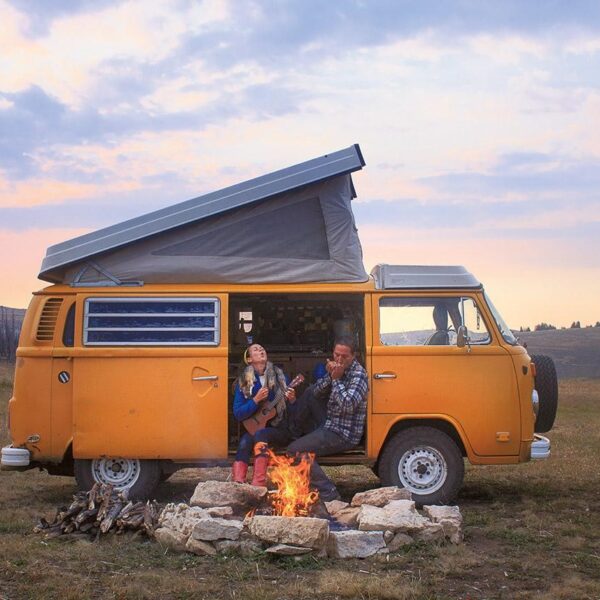Bicycle touring is a way of traveling for some. That’s how they see and experience the world out of their panniers. This tour typically goes for days or months for the more experienced ones, or maybe a few hours to qualify for a day trip.
However this traveling on bike plays out, the important thing is to be prepared and ready when you embark on this adventure.
Here are a few pro tips that can help you plan and pack for a cycling adventure. Feel free to read these travel hacks, which are not in chronological order.
Flying Your Bike
Before you buy a ticket, reach out to the airline for its relevant policies on transporting bikes on the plane. Be specific as possible in your correspondence, detailing the weight, height, and other dimensions of your bike for more accurate response.
Policies vary among carriers, which may require you to pack it inside a bag or case and charge additional fees for excess weight. You can get help from bicycle shops on how to store your bike safely and snugly for air travel.
Looking for a Place to Stay
If you get stuck in a not-so-touristy side of town as in the case of those who spend days on the road, you can seek shelter at temples, police stations, fire stations, religious/government buildings, and homes of locals. One tip is to enlist the help of a local to write your request in the dialect/language.
Be mindful of house rules, especially if you spend the night at the temple. Donation may be best, and don’t expect to find hotel-like amenities.
Drinking Water
Before you head out, drink lots of water. The amount will depend on how hot or how cold it is outside. Riding out during cold weather is a tricky factor in hydration. The drop in temperature can induce diuresis, which points to not consuming water excessively to avoid too many stops to relieve yourself. However, it’s also not a good idea not to drink water because it can lead to dehydration even when the temperature is frigid.
You also have to take a bottle of water with you. Free up more space in your bag for this supply when you travel to places where you are unsure of sources of clean running water.
Cooking Meals
Research on the area to check if bringing a stove makes sense. Nonetheless, preparing your food while on a bike tour is practical. Here are some useful hacks:
- Soak beans and lentils in water overnight to lessen cooking time.
- If you are near the sea, use saltwater for cooking pasta. Dilute the saltiness by adding freshwater.
- Add rice or pasta together with water to save fuel.
- If you happen to be near a forest, tree sap is a natural fire starter.
Applying Sunscreen
Sunscreen is a must when cycling, but be careful not to apply it above your eyes. The application can mix with your sweat and trickle to your eyes. It may be worthwhile to check on products that promise not to burn the eyes when you sweat.
Nonetheless, you can protect your forehead and avoid a tan line by wearing a cycling hat or bandanna underneath your helmet.
Keeping Your Stuff Dry
Store money, phone, or any personal item in resealable and reusable plastic bags. They serve as another layer of protection while in waterproof packs.
Some also use trash compactor bags for clothes that need to be dry while traveling.
Preventing Blisters
Blisters and callouses can happen to anyone, including mountain bikers. The problem sometimes lies with the handlebars as they may not have a perfect fit for the grip. Gloves with the right padding and size can help ease the discomfort.
Before you put on the gloves, try taping your fingers for blister prevention. You can also apply it to the areas of your feet to relieve pain from rubbing or friction with your shoes. Unlike the typical adhesive bandage, the blister tape can last for a day or two because it is designed for outdoor use.
Deodorizing Cycling Shoes
The sweat, moisture, and debris from the road combine to create a unique yet powerful smell that sticks to your shoes. You can pour a teaspoon of baking soda into the shoes to absorb the odor.
Another DIY is to stuff the shoes with newspaper or any sheet of paper and leave them out to dry.
Installing Lights
For everyone’s safety, including yours, add lights to your bicycle. These lights are useful for daytime or nighttime use and are usually removable for easy charging. The bicycle lights vary by purpose (e.g., road, off-road, or both).
Front and rear lights add to the road-worthiness of your vehicle.
Measuring Performance
How fit are you? If you are consciously putting in the effort to burn calories and move toward a healthier lifestyle, using a power meter will help quantify your hard work on the bicycle.
This device is attached to the bike to measure your power output. Because cyclists tend to own a few bikes, it’s not uncommon for them to buy a cycling power meter they can move from one road bike to another, etc. If you can’t bring your own bike, you may still be able to use your power meter on another mountain bike.
Seeing the world on a bicycle is one of the best ways to travel. Be on your way.
Image Credits: O'car Johann Campos




Like this article? Share with your friends!